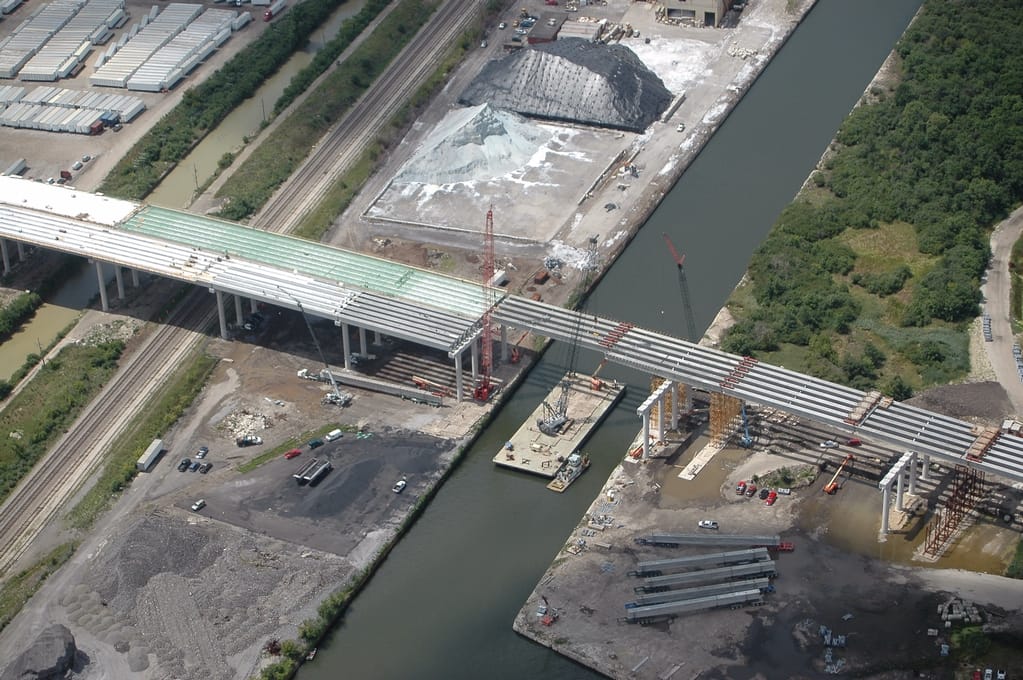

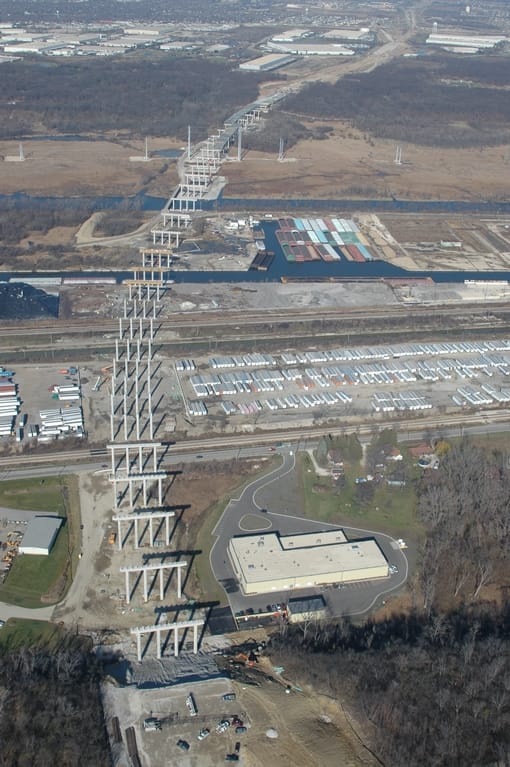
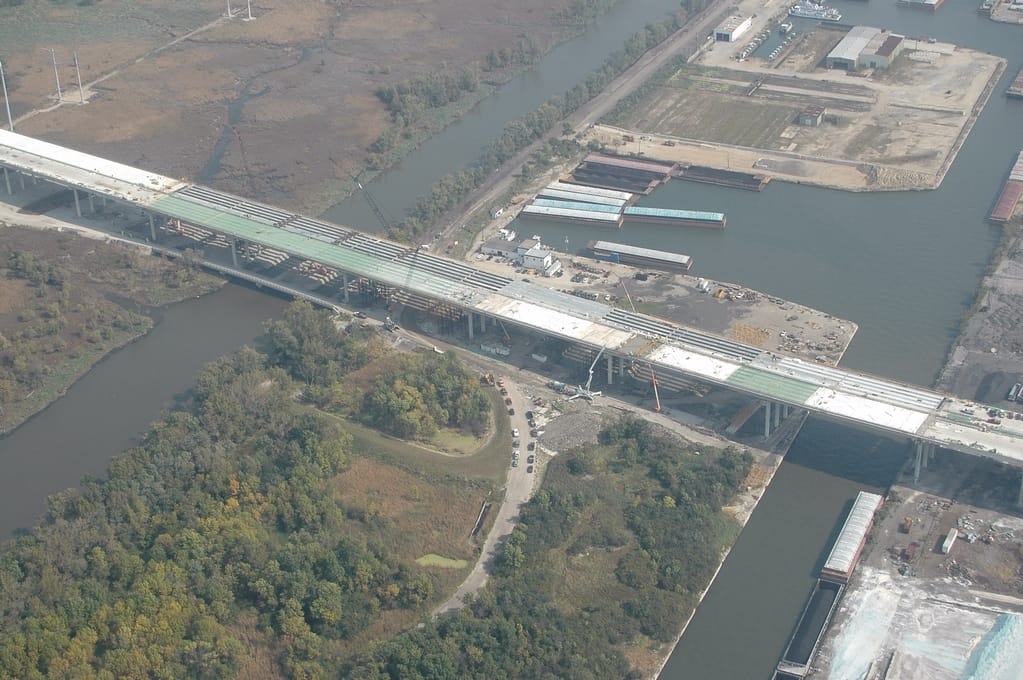
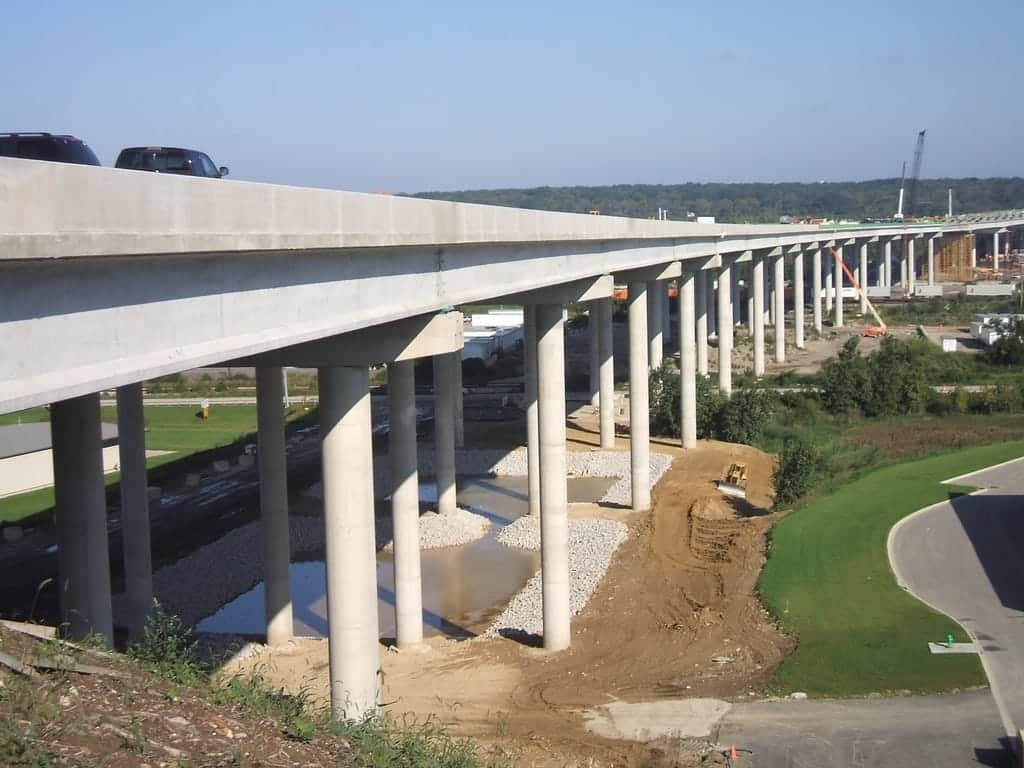
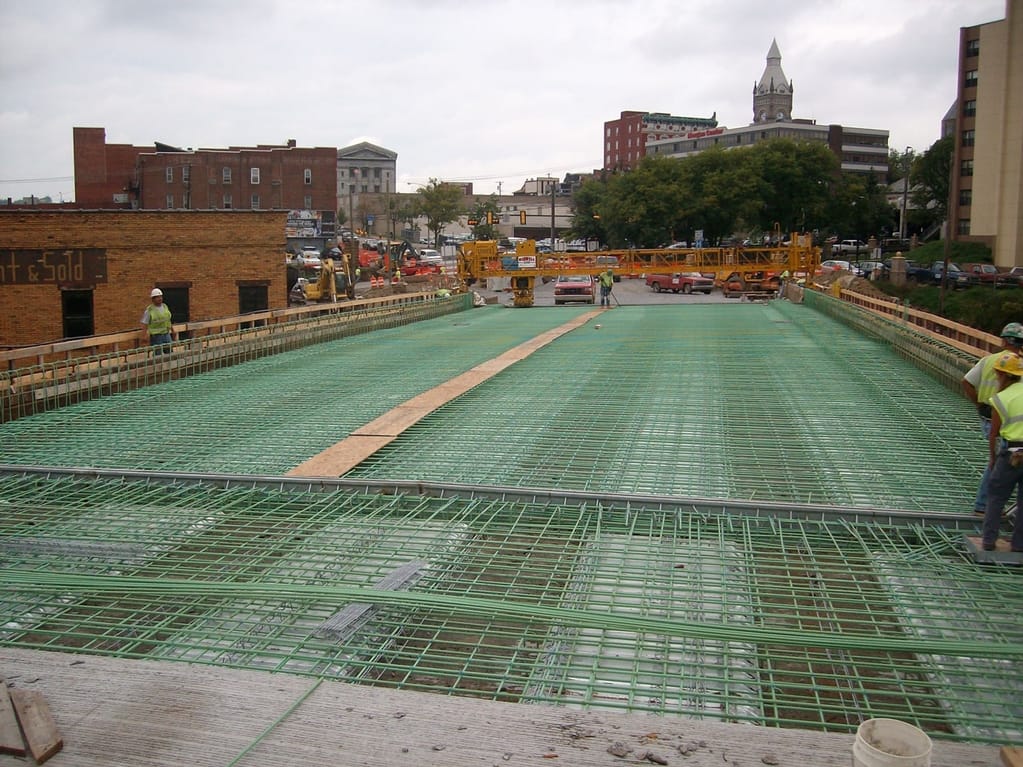
DES PLAINES RIVER VALLEY BRIDGE ON I-355
Lemont, IL
PROJECT DETAILS
- Design Criteria:
- Choose between steel plate-girder and segmental concrete box-girder options
- Minimize impact on wetlands below the bridge
- Span 1.3-miles with minimal piers
- Come in on time and on budget
- (252) 90-inch girders
- (300) 102-inch girders<
- (60) 120-inch girders
- Prestressed girder spans range from 114 to 170 feet
- Post-tensioned spliced girder spans range from 216 to 270 feet long.
- Owner: Illinois State Toll Highway Authority, Springfield, IL
- Designer: Janssen & Spaans Engineering Inc., Indianapolis, IN
- Builder(s): Walsh Construction Group, Chicago, IL
- Epoxy-Coated Reinforcing Steel: Rebars and Steel Co., McHenry, IL
- Total Cost: $125 million
- Date Opened: November 2007
The 1.3-mile Des Plaines River Valley (DPRV) bridge on Interstate 355 near the Chicago suburb of Lemont, IL, is the state’s first to use post-tensioned, prestressed, precast spliced bulb-tee girders. The structure combines concrete spliced bulb-tee girders with the bulb-tee girders.
The new approach was instigated because of volatility in material prices as the bridge was being designed. To address these fluctuations, officials included a performance-based bid specification that allowed contractors to propose their own design.
The DPRV spans two canals, several railroad lines, two local roads, the Des Plaines River and a forest preserve. The spliced-girder design allowed long spans, which minimized the bridge’s impact on all of these areas. The bridge has a total of 34 piers for 35 spans and features 18 simple prestressed spans and 17 post-tensioned spans.
The spliced girder’s length minimized the impact on the wetlands through which it passes. The simple spans are made continuous with closure pours over their pier caps. Epoxy-coated reinforcing steel protruded from the ends of the beams into 1-foot gaps between the ends of the bulb-tee girders over the piers.
Falsework supported the beams on both a pier and the falsework. Two beams would extend toward each other, leaving space for a drop-in segment of 124 to 150 feet long. Once the girder was released from the crane, the post-tensioning ducts were coupled, and epoxy-coated reinforcing bar was set. The closure pours then were completed, allowing them to act as monolithic diaphragms.
The 270-foot girders were haunched to 120 inches over piers (instead of the typical 102-inch depth), where the maximum negative moment occurred.
The deck was poured over epoxy-coated reinforcing bar to ensure the highest level of corrosion resistance for the service life of the bridge.
The $24-million contract for the precast, prestressed girders produced the largest-ever contract for Prestress Engineering Corp. (PEC), which is Illinois’ largest concrete-bridge supplier. To handle the order, the precaster built two in-ground casting beds, bought three beam forms, doubled its workforce to 200 people, and purchased eight 10-axle trailers. Each casting bed is 400 ft long by 20 ft wide by 10 ft deep.